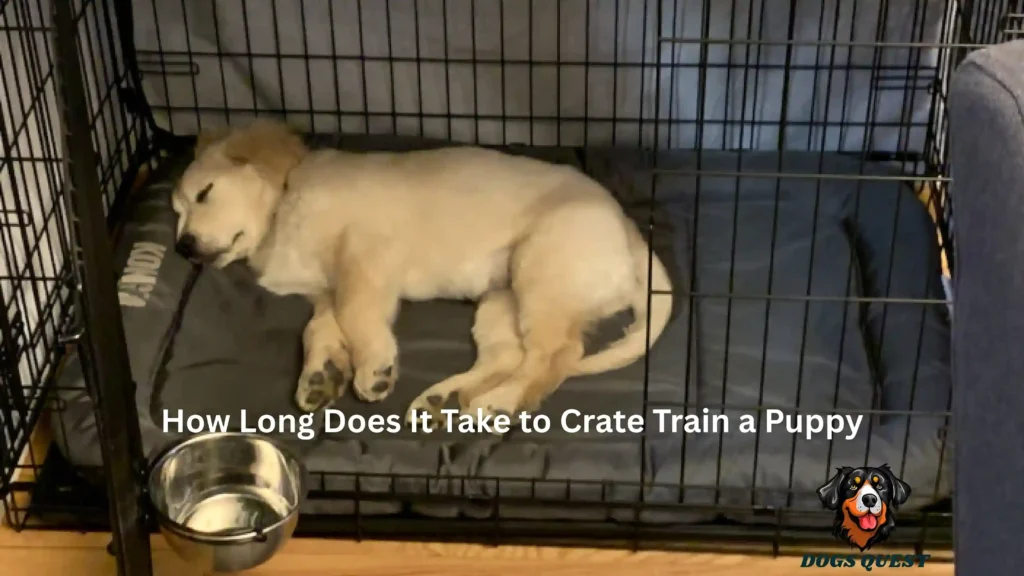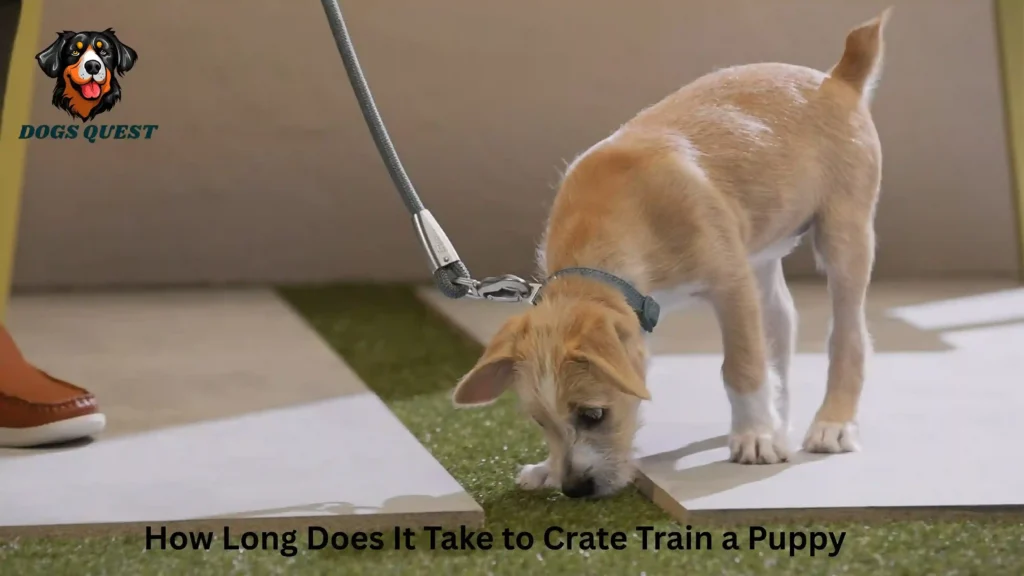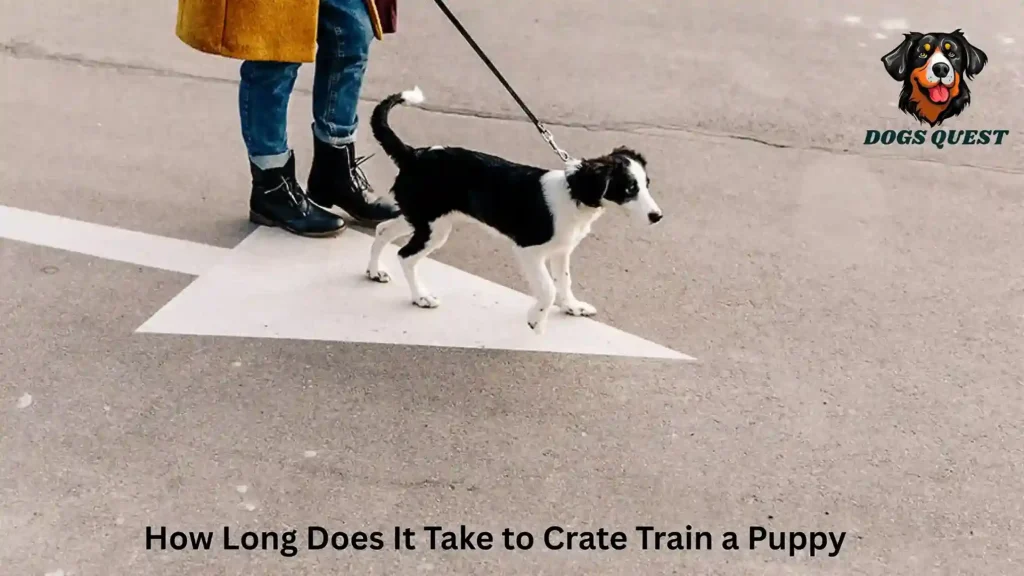Wondering how long does it take to crate train a puppy? Learn the step-by-step process, average timeline, mistakes to avoid, and proven tips to crate train your puppy faster and stress-free.
Why Crate Training Matters
If you just welcomed a furry little friend into your home, you’re probably asking yourself: “How long does it take to crate train a puppy?” This is one of the most common questions new dog parents have, and for good reason. Crate training is more than just housebreaking—it’s about teaching your puppy to feel safe, secure, and comfortable in their own space.
Crates are not cages; when used properly, they become a puppy’s safe den. But just like potty training, crate training doesn’t happen overnight. The time it takes depends on your puppy’s age, temperament, and how consistent you are.
In this guide, we’ll walk you through:
- The average timeline for crate train a puppy
- Step-by-step instructions
- Common mistakes that slow progress
- Tips to speed up the process
- Signs your puppy is crate trained
Let’s dive in!
How Long Does It Take to Crate Train a Puppy on Average?

The short answer: crate training usually takes 2 to 6 weeks.
But here’s the catch: every puppy is unique. Some puppies adapt in just a few days, while others may take several months. Factors such as age, breed, and past experiences all play a role.
Factors That Affect Crate Training Time
- Age of the Puppy
- 8–12 weeks: Puppies at this age can learn quickly but have small bladders, so expect more nighttime interruptions.
- 3–6 months: They have better bladder control, making crate training easier.
- Older dogs: They may need extra patience, especially if they’ve had negative experiences with confinement.
- Temperament
- Confident puppies often adapt faster.
- Nervous or rescue puppies may take longer to feel safe.
- Consistency
- The more consistent you are with training, the faster your puppy will learn.
How to Crate Train a Puppy

To answer “how long does it take to crate train a puppy” in practice, you need to follow the right steps. Here’s a structured plan:
Introduce the Crate Positively
- Place the crate in a central spot in your home.
- Keep the door open at first.
- Use treats, toys, or a soft blanket to encourage your puppy to explore.
Feed Meals in the Crate
- Start by feeding your puppy inside the crate.
- This builds positive associations.
- Slowly close the door while they eat and open it once they finish.
Short Crate Sessions During the Day
- Begin with 5–10 minutes at a time.
- Stay nearby so your puppy feels safe.
- Gradually increase to 30–60 minutes.
Crating at Night
- Puppies often whine at first—this is normal.
- Place the crate near your bed so they feel secure.
- Take them out for potty breaks every 2–4 hours (depending on age).
Gradual Independence
- Once your puppy can rest quietly for several hours, start leaving the house for short periods.
- Build up to longer absences to prevent separation anxiety.
Common Mistakes That Slow Crate Training

When people ask, “how long does it take to crate train a puppy,” the honest answer often depends on whether you avoid these pitfalls:
- Using the crate as punishment → This makes your puppy fear it.
- Leaving the puppy too long → They’ll associate the crate with discomfort.
- Being inconsistent → Skipping crate training sessions confuses your puppy.
- Not exercising enough → A tired puppy settles faster in the crate.
How Long Should a Puppy Stay in a Crate?
Understanding crate duration is key to faster success.
- 8–10 weeks old: 30–60 minutes at a time
- 11–14 weeks old: Up to 2 hours
- 15–16 weeks old: Up to 3 hours
- Over 17 weeks: 4+ hours (but no more than 6–7 hours during the day)
At night, puppies can usually last longer since they’re sleeping.
Tips to Speed Up Crate Training
If you want to reduce how long it takes to crate train a puppy, try these expert strategies:
- Use high-value treats like small chicken pieces or puppy-safe peanut butter.
- Exercise before crating to help them relax.
- Add a comfort item like a blanket or a piece of clothing that smells like you.
- Try crate games (e.g., tossing toys inside) to make it fun.
- Stay calm and patient—puppies can sense frustration.
Signs Your Puppy Is Fully Crate Trained
You’ll know crate training is successful when your puppy:
- Walks into the crate on their own
- Settles quietly without whining
- Sleeps through the night in the crate
- Waits calmly for you to open the door
- Uses the crate as a resting spot
At this stage, you’ve achieved what every pet parent hopes for—a happy, well-adjusted pup who sees their crate as a cozy den.
Final Thoughts: So, How Long Does It Take to Crate Train a Puppy?

On average, crate training a puppy takes 2 to 6 weeks, but the timeline varies for every dog. Some puppies learn in days, while others need months of gentle guidance.
The key to faster success is consistency, patience, and positive reinforcement. Remember—crate training isn’t just about convenience for you; it’s about giving your puppy a safe space where they feel comfortable and secure.
So, the next time someone asks “how long does it take to crate train a puppy,” you’ll know the answer: as long as it takes for your puppy to trust, relax, and love their little den.
FAQs About Crate Training
Q1. Is crate training cruel?
No—when done correctly, crate training is humane and comforting. Dogs are natural den animals and often feel safe in small, cozy spaces.
Q2. Should I cover my puppy’s crate?
Yes, partially covering the crate can help your puppy feel more secure, but always leave enough ventilation.
Q3. Can I crate train an older dog?
Absolutely! It may take longer than with a puppy, but the same principles apply.
Q4. What if my puppy cries in the crate?
Ignore whining unless you’re sure it’s a potty break request. Reward calm behavior to reinforce quietness.

